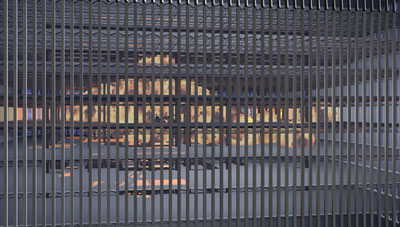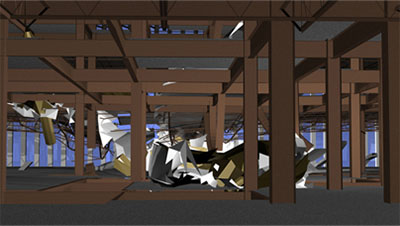Scientifically Based Animation of 9/11 Attacks a Challenge for CS Servers
06-15-2007
A Purdue University June 12th news release available at http://news.uns.purdue.edu/x/2007a/070612HoffmannWTC.html announced recent work on 9/11 visualizations done by a team of Purdue's computer scientists and civil engineers. The scientifically based animation of the 9/11 attack was developed by Professor Chris Hoffmann to help engineers study the effects of the twin towers following the terrorist attack. The recent version of the video is enhanced with a translator application developed by Professor Voicu Popescu. The translator creates a link between computer simulations and computer visualization systems to automatically translate simulation data into a more realistic 3-D animation scene.

The updated version of the 9/11 video had been available on the CS web site beginning April 16, 2007. The download rates of this large video file (122MB) averaged only a few each day. However, the CS internet web servers started to sweat shortly after Purdue announced this state-of-the-art 9/11 animated visualization video. The Purdue press release about the visualization work was picked up by various news sites, including physorg.com and the popular digg.com. The results were immediate. CS Facilities and Network Administrator, Dan Trinkle said, "At about 5:00pm the CS web server started receiving about 1500 hits an hour. If they were all successful, that would have been about 190 GB per hour of file transfer." During the 8:00am-9:00am hour the next morning, the video had over 7900 hits -- almost 1TB if successful. The CS server was not able to serve the file quickly enough, so browsers would time out. Most of the hits at that time were only partial transfers so the high number could be attributed to retries.

At first, CS replaced the video with an error message (small text file). Researchers then uploaded the video to YouTube. Trinkle comments, "This site is better able to handle widespread distribution of videos." Once that was done, CS configured the server to redirect requests to the YouTube location.
For the rest of the day, CS saw access rates over 700 per hour and as high as 2000 per hour redirecting requests to YouTube. By the end of the day CS had handled over 38,000 hits from over 16,000 different sites. By Thursday, June 14th most people were accessing the video directly from YouTube. The YouTube video has been viewed over 87,000 times.